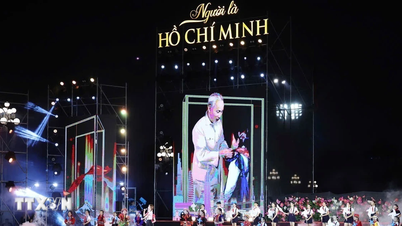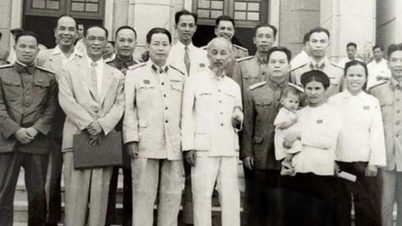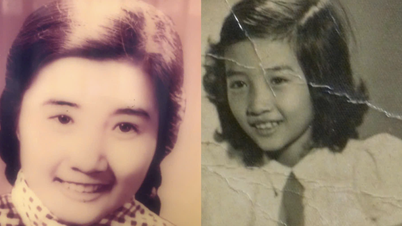
The book clearly analyzes the causes, manifestations and typical examples of toxic shame. The author outlines a process to recover and transform toxic shame into healthy shame to achieve mental balance. From there, people can live with their true and peaceful selves, reaching for a meaningful and dedicated life.
The role of healthy shame
First, the author defines shame, pointing out that it is an emotion inherent in every human being, necessary for the formation and development of humanity. From there, he makes a distinction between healthy shame and toxic shame: “Shame is the emotion that allows us to be human. Shame lets us know our own limits, keeps us within human boundaries, lets us know that we can and will make mistakes, and understands that we need help.”
To help readers understand the role of shame in the inner self and personality, author Bradshaw takes us through each person's life to observe the stages of healthy shame development. Going through different ages, from 6 months old, childhood, puberty, youth, adulthood and then old age, the author points out that shame always goes hand in hand with the development of the human mind and psychology, contributing to helping them have behaviors appropriate to that stage of development.
Shame helps control the process of children discovering the world , expressing emotions, and forming a conscience. Shame is the source of creativity and learning. Shame helps people live in the community, have a sense of gender, love and connect with people.
Effects of toxic shame
Understanding the effects of healthy shame, Bradshaw moves on to fully define toxic shame.
He also goes into each stage of human development to analyze how toxic shame threatens our lives. The author describes in great detail the negative aspects of shame. It reduces the courage and enthusiasm of children when exploring the world, crushes their autonomy, forces them to strive to be better or worse than others, and makes them always feel inadequate.
And when shame becomes an identity (internalized), people will form a false ego, alienated from themselves, overly dependent on others, immersed in addictions, personality disorders, and spiritual bankruptcy.
Causes and symptoms of toxic shame
The author traces the origins of toxic shame to systems: family, school, religion, culture. In which, family has a key influence on the formation and development of shame in each individual, because: "Toxic shame is mainly nurtured from important relationships".
Since family is the first place we learn about ourselves, children will look to their parents as role models, so parents who carry this shame will pass it on to their children.
Marriages and caregivers who carry toxic shame and unhealed neediness will not be able to adequately care for their children's needs, and children will grow up in a land of shame rather than a loving embrace.
After analyzing the source, the author looks for the hiding place of toxic shame: its manifestations. According to him, when carrying this shame, people will build up layers of defense, deny the damage, depend on virtual bonds, become numb. They fall into a state of dissociation, depersonalization.
How to Recover and Break Free from Toxic Shame
After thoroughly analyzing the origins, manifestations, and effects of toxic shame, Bradshaw leads readers on a journey to recovery and enlightenment.
Because toxic shame drives people into a state of extreme loneliness, to heal we must break free from isolation.
Since toxic shame comes from personal relationships, healing requires personal relationships. To love and be loved is a basic human need, and only when this basic need is fulfilled can we be whole. We must let go of our false selves and find our true selves hidden in the darkness within.
Bradshaw also offers a 12-step program to transform toxic shame into healthy shame, a method that helps you gradually heal your relationship with life, yourself, and others, and then continue to maintain it in the future.
This book helps readers understand every aspect of toxic shame, showing them a path to overcoming it and healing completely. Analyzing its origins and providing specific guidance on how to cope, this is an understanding companion for those on the healing journey.
John Bradshaw (1933 - 2016) was the author of several bestselling books: Bradshaw: Talking About Family, Coming Home, Reviving and Supporting the Child Within, Creating Love, Family Secrets and five Emmy-nominated PBS television series.
Known as the “father of the movement”
self-help,” he has been a frequent guest on Oprah, CNN, MSNBC and numerous news networks throughout his career.
Source: https://laodong.vn/sach-hay/hieu-de-chua-lanh-va-goc-nhin-moi-la-ve-noi-ho-then-1368618.ldo






![[Photo] Ready for the top competitions of Vietnamese table tennis](https://vphoto.vietnam.vn/thumb/1200x675/vietnam/resource/IMAGE/2025/5/18/9c547c497c5a4ade8f98c8e7d44f5a41)
![[Photo] Many young people patiently lined up under the hot sun to receive a special supplement from Nhan Dan Newspaper.](https://vphoto.vietnam.vn/thumb/1200x675/vietnam/resource/IMAGE/2025/5/18/6f19d322f9364f0ebb6fbfe9377842d3)




















![[Photo] General Secretary To Lam visits exhibition of achievements in private economic development](https://vphoto.vietnam.vn/thumb/1200x675/vietnam/resource/IMAGE/2025/5/18/1809dc545f214a86911fe2d2d0fde2e8)
































































Comment (0)